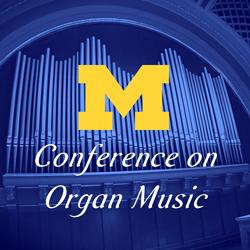
The University of Michigan presents its 54th annual Conference on Organ Music September 28–30 in Ann Arbor, Michigan. This year’s conference honors Dr. Michele Johns’ 33 years of teaching.
The schedule includes organ, harpsichord, and carillon recitals, lectures, workshops, a celebratory dinner honoring Dr. Johns, and the third annual Improvisation Competition. Presenters include Pamela Ruiter-Feenstra, Jörg Abbing, Michael Barone, Karl Schrock, Joy Schroeder, Joshua Boyd, Larry Visser, Darlene Kuperus, Iain Quinn, Joseph Gascho, Kola Owolabi, and others.
For information:
http://www.music.umich.edu/performances_events/organconference/registration_online.php

